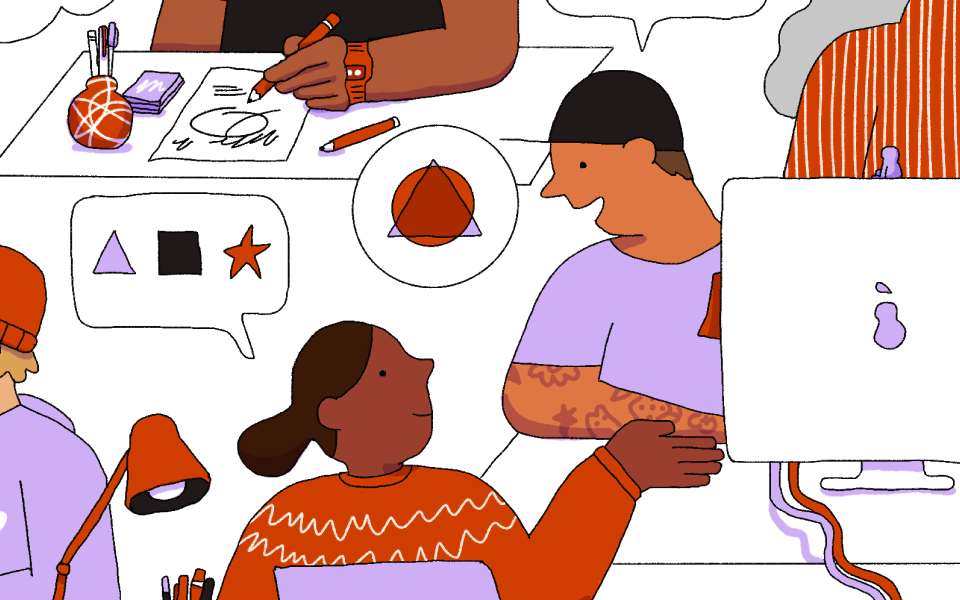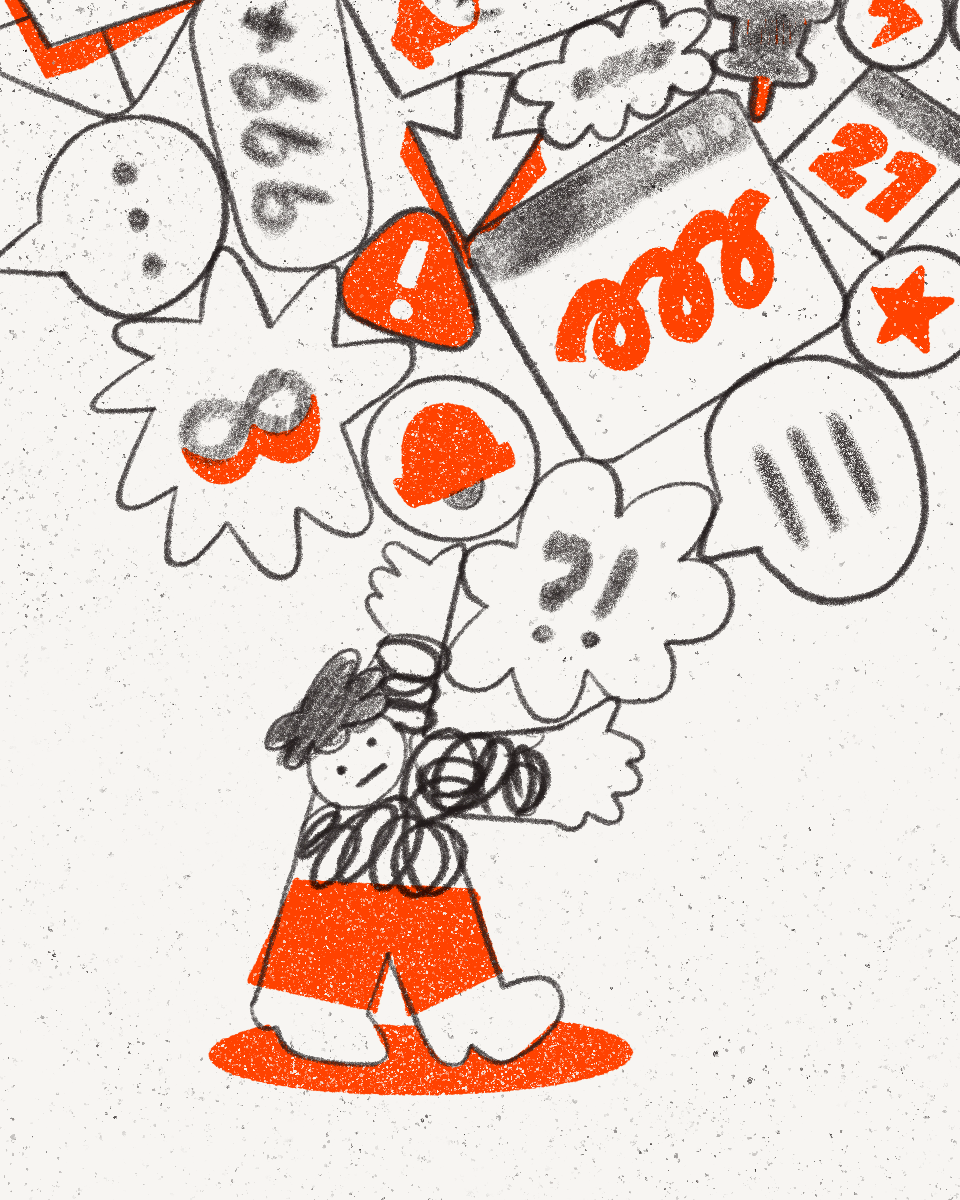
Reimagining meetings: How AI can help us protect our most precious resource
Published on November 10, 2025
Time is our most precious resource. As we navigate an era of hyper-productivity powered by AI, how we spend our time at work—especially in meetings—is under closer scrutiny than ever. Meetings, which are meant to enable collaboration, often become the single most expensive and least managed part of modern work.
Knowledge workers face a constant trade-off: focus time versus meeting time (or, as scientist, entrepreneur, and essayist Paul Graham calls it, “maker time” versus “manager time”). When you multiply pay by hours spent, meetings quickly become one of your most significant investments. Yet, unlike budgets or headcount, they’re rarely managed with the same rigor.
Despite good intentions, many meetings remain the default rather than purposeful, leaving employees overwhelmed and calendars cluttered. We’ve tried to address this before: A decade ago, Dropbox staged “Armeetinggeddon” to slash calendars. The relief was short-lived. Without structural change, ineffective meetings grew back like weeds.
The real opportunity isn’t fewer meetings. It’s better ones—meetings with intent, purpose, and systems in place to protect focus. And with the rise of AI and advancements in collaboration tools, we have a chance to fundamentally reshape them.
But AI alone can’t necessarily fix broken human behaviors. We have to evolve our instinctual meeting impulses.
This year, meeting effectiveness has become a top priority. In our Virtual First, async-by-default culture, our synchronous moments are more precious than ever and deserve careful attention to ensure they’re truly efficient. Through ongoing internal experiments and our lab mentality, we aim to uncover and share solutions to common workplace challenges that help teams everywhere use their time more wisely.
The current state of meetings
Meetings remain stubbornly inefficient. According to a recent Flex Index survey of global knowledge workers:
- 32% spend most of their week in meetings, yet fewer than half (48%) find them effective
- Only 13% say most meetings are worth the time
- 45% report getting enough uninterrupted time for deep work
- Just 20% automate notes for most meetings, while 37% rarely or never use automation tools
- Attendance is often driven by obligation, not because participants add meaningful value
Our own internal surveys echo this. While about 70% of meetings are considered effective (which is rather high compared to external benchmarks), Dropbox employees still report that recurring meetings, inconsistent agendas, and global time zone challenges continue to create friction.
The lesson? Reducing meetings entirely might seem like the answer, but the real opportunity lies in improving their quality and structure to support sustainable, high-performance collaboration.

What we discovered in our design sprint
We recently hosted a meeting-centric design sprint, a hands-on workshop to explore new ideas and turn them into testable solutions. The sprint brought together leaders in people analytics, behavioral science, and product, along with experts in design, business, psychology, and AI engineering. By combining focused collaboration with real-time experimentation, we accelerated learning and decision-making.
Our goal? To reimagine meetings as purposeful tools rather than chaotic reflexes.
Led by Dropbox, the design sprint brought together a diverse group of experts, including:
- Molly Sands, Head of Teamwork Lab, Atlassian
- Brian Elliott, CEO, Work Forward and Publisher, Flex Index
- Neil Morelli, Managing Partner & Co-Founder, Workplace Labs
- Jonathan Flower, Managing Partner & Co-Founder, Workplace Labs
- Caribay Garcia Marquez, Head of Microsoft Viva People Science R&D, Microsoft
- Jeanette Mellinger, Customer Research Consultant & Advisor, Question
- Patrick Lightbody, Co-Founder, Reclaim.ai

By bringing together practitioners who understand the realities of modern work with futurists pushing boundaries, we created a space to reimagine how meetings could serve people, not the other way around.
So, why do meetings often go sideways? Here’s what we found, and what we should explore next:
1. Meetings often lack a clear, shared understanding of purpose and type
- The challenge: Without shared understanding, practices, or standards, undefined meetings lead to mismatched expectations. This creates confusion, overload, and disengagement among attendees.
- The opportunity: Create a “meeting taxonomy framework” with distinct types (e.g., decision jam, sync update, connection circle, AI briefing). Embedding these labels into scheduling tools, like Reclaim.ai’s Smart Meetings, helps to set clearer expectations, reduce clutter, and improve quality.

2. Attendance is driven by obligation, not value
- The challenge: Employees feel pressure to attend even when their presence isn’t critical. This could be out of fear of being left out, desiring to be seen or feeling validated, or potentially, being disengaged.
- The opportunity: Build a “smart RSVP system” with AI-powered contextual intelligence, where attendees declare their role (contribute, decide, observe) and are nudged toward async options, like transcripts or summaries if live presence isn’t essential. This system can also automatically recommend attendees based on their involvement. This makes participation intentional.
3. We’re operating in a default meeting culture
- The challenge: Since meetings are “free” and relatively easy to schedule, anyone can claim time with a calendar invite. Teams book someone’s time by default without considering other asynchronous formats that could be more effective.
- The opportunity: Use a “smart collaboration guide” that asks, What’s your intent? Who really needs to be involved? Based on inputs, it suggests the ideal format, length, attendees, and supporting tools.
4. Missteps in leadership modeling shape culture
- The challenge: Even the best tools won’t stick if leaders model poor habits. Unproductive, low-quality meetings often stem from unclear norms and leadership behaviors.
- The opportunity: Create a “meeting health dashboard” that aggregates data from calendars, summaries, and feedback. Leaders can see how their teams spend time, model better practices, and drive culture change from the top down.

5. Meetings aren’t truly designed for AI support
- The challenge: AI meeting tools can capture notes and generate summaries, but without strong structure—like clear agendas and decision points—they only amplify poor habits.
- The opportunity: Introduce an “AI co-facilitator” that reviews agendas, prompts timekeeping, surfaces quieter voices, and captures decisions. This encourages better preparation and follow-through while making meetings more inclusive.

From ideas to prototypes
As it turns out, the quality of a meeting is usually determined long before anyone joins the call. That’s why the design sprint produced two early prototypes, both focused on the most overlooked and highest-leverage phase of every meeting: the pre-meeting stage.
Prototype 1: Value-based participation system
This prototype focuses on the scheduling and decision-making phase, helping organizers determine whether a meeting should happen at all and who truly needs to attend.
Imagine an AI-guided checklist built into your calendar that ensures every meeting has a clear purpose and the right participants before the invite is sent.
As you build the invite, it can:
- Recommend essential attendees and flag who could receive an async summary instead
- Suggest alternative formats (e.g., shared docs, recordings, async updates) when live collaboration isn’t needed
- Nudge you to attach a pre-read or define ownership before sending the invite
- Generate first-draft agendas, summarized pre-reads, or async summaries to support decision-making and efficiency
Example:
“You’re scheduling a 60-minute sync with 10 people. Only three are decision-makers. Would you like to send the others an async summary instead?”
This results in fewer unnecessary attendees, clearer preparation, and more protected time for deep work. You can also use tools like Time Tracking for a better view of how and where you’re spending your time.

Prototype 2: Intentional collaboration framework
While the first prototype helps decide whether you should meet and how, this system helps teams optimize what happens before, during, and after the meeting.
Blending elements of a DACI framework (Driver, Approver, Contributor, Informed) with an AI-powered “Meeting Consultant,” this system helps hosts design meetings for impact. It reviews agendas, identifies patterns in recurring sessions, and offers real-time feedback to improve structure and flow.
It might:
- Recommend adjustments to meeting length, format, or frequency based on purpose
- Flag when a recurring sync has gone stale or could be replaced with an async update
- Suggest improvements to agenda clarity or post-meeting summaries to reinforce decisions and accountability
Example:
“Is this an update or a decision? If it’s an update, try recording a short Loom (or other video tool) instead.”
This framework promotes consistent planning, stronger host accountability, and better follow-through across the full meeting lifecycle. It turns meetings into intentional moments of impact rather than default habits.
Both prototypes share a common principle: AI shouldn’t replace the human side of meetings; it should help us show up with purpose. Moving forward, we’ll use these prototypes, along with tools like Reclaim.ai, as part of our broader efforts to optimize meetings at Dropbox. Our goal is to create more focus time and, in turn, drive greater impact, performance, and speed.

A new era for meetings
Our aim goes beyond fixing meetings at Dropbox. We want to share what works so others can make better use of their time. With intentional design, meetings become opportunities to enable the deep, focused work that truly moves teams forward.
At Dropbox, this design sprint marks just the beginning. The insights and prototypes developed are shaping how we’ll continue to optimize meetings in the year ahead and help teams make the most of every moment together. We look forward to sharing more as this work unfolds.
While we may not solve every meeting challenge overnight, these insights provide a strong foundation for tackling one of the biggest pain points in modern work. By embracing AI-driven solutions and rethinking meeting culture, organizations can build more focused and productive work environments.
The future of work may not be meeting-free, but it can certainly be meeting-smart.
Follow along our journey at our Virtual First hub.
 Dropbox Dash: The AI teammate that understands your work
Dropbox Dash: The AI teammate that understands your work





.png/_jcr_content/renditions/hero_square%20(1).webp)